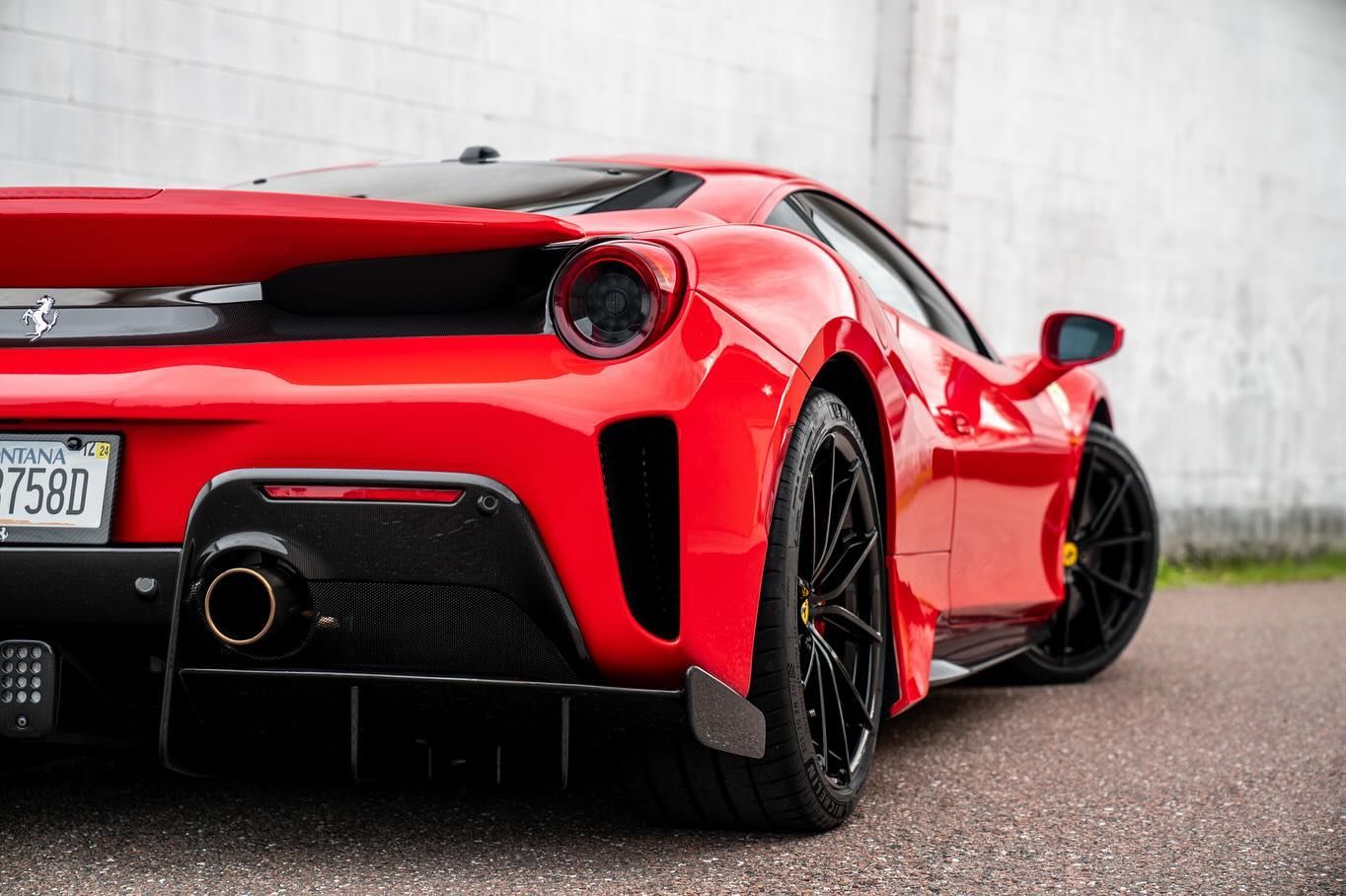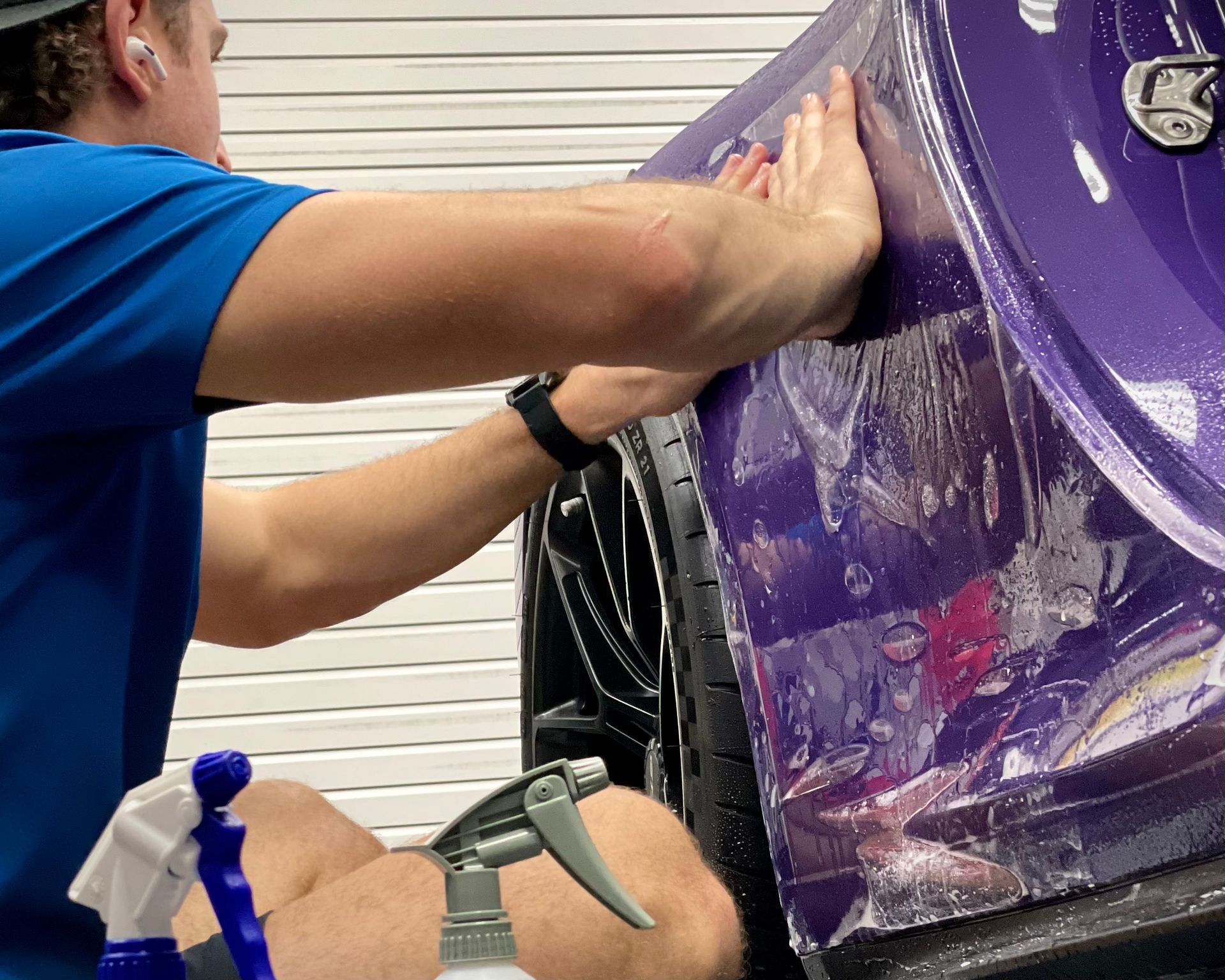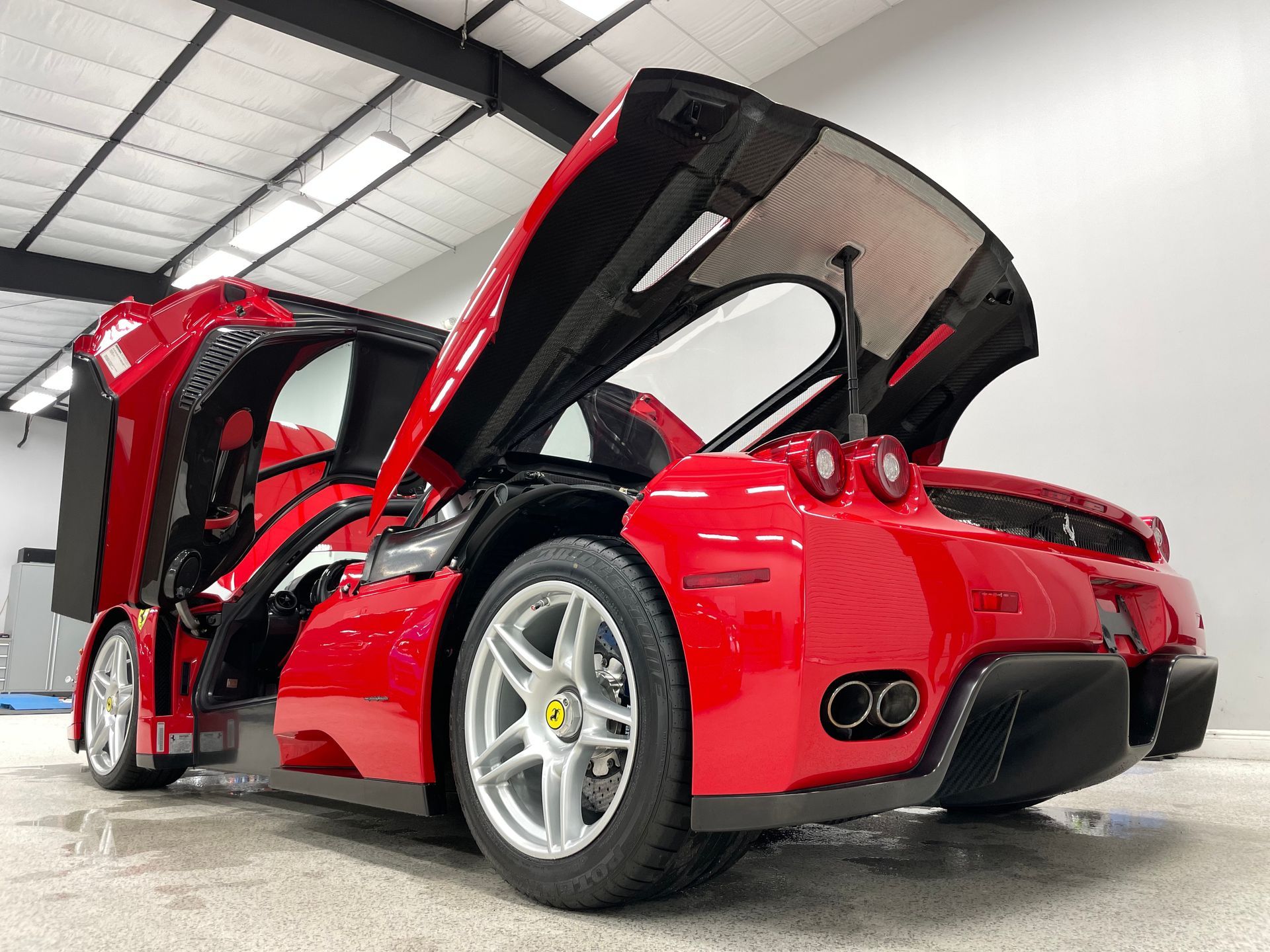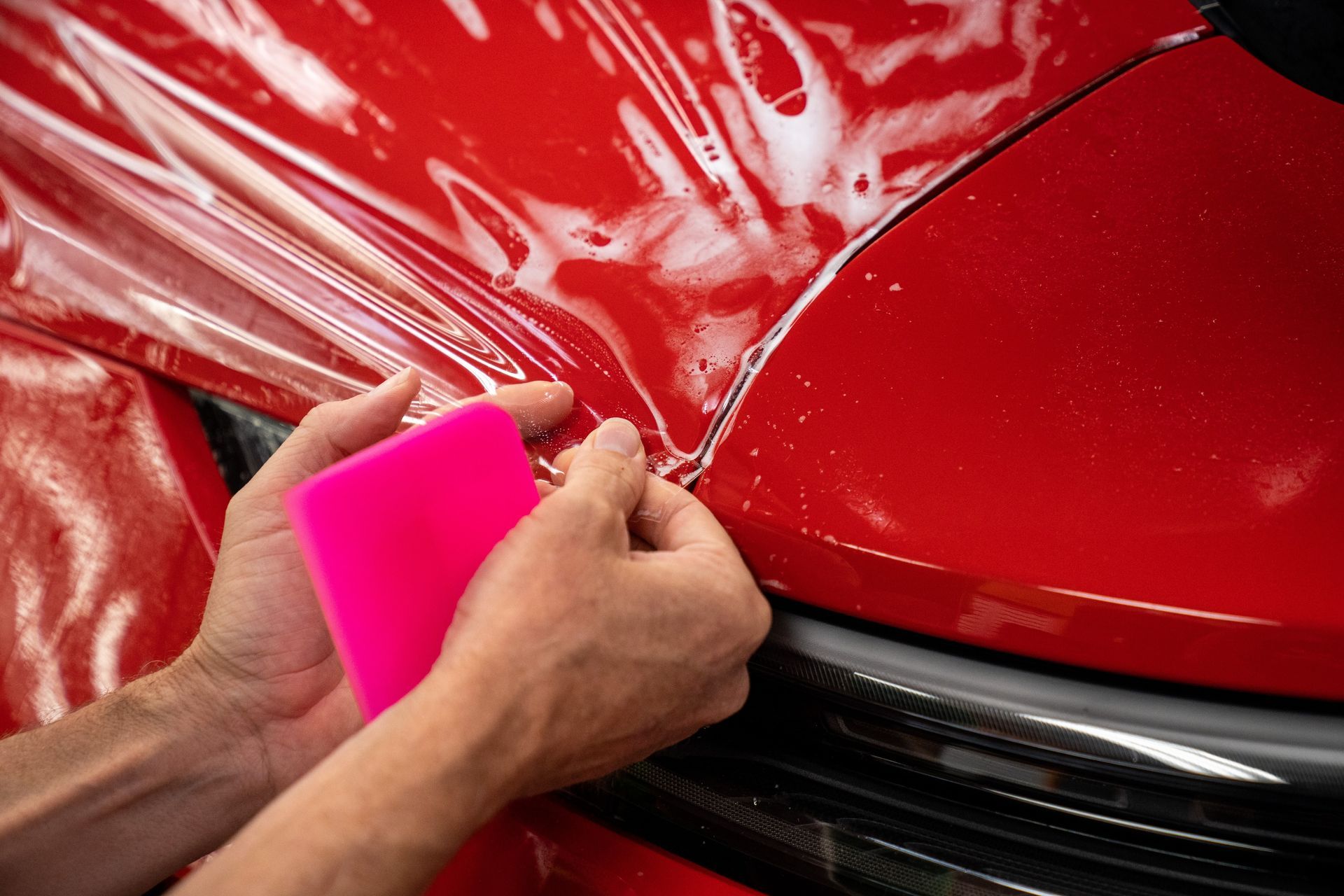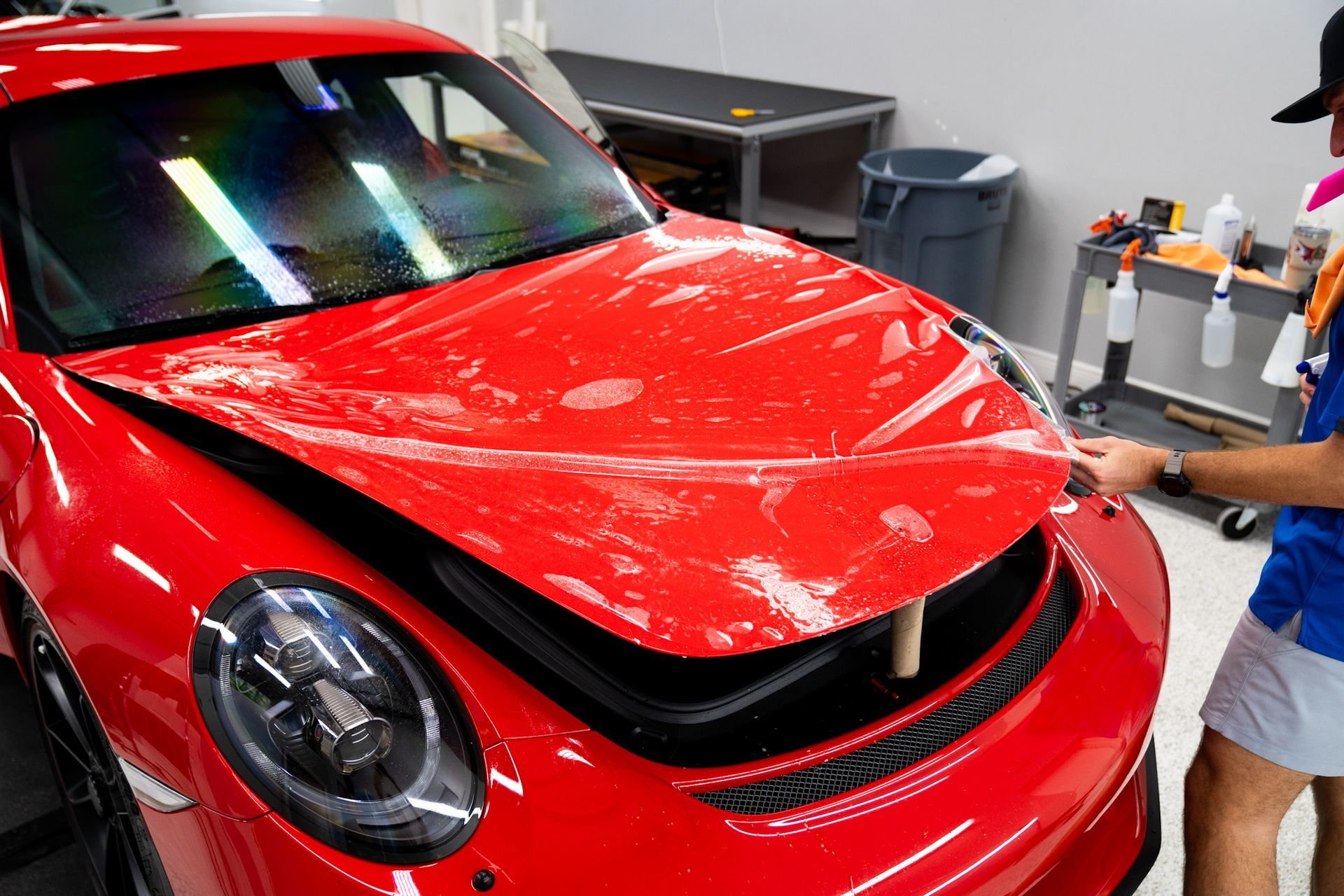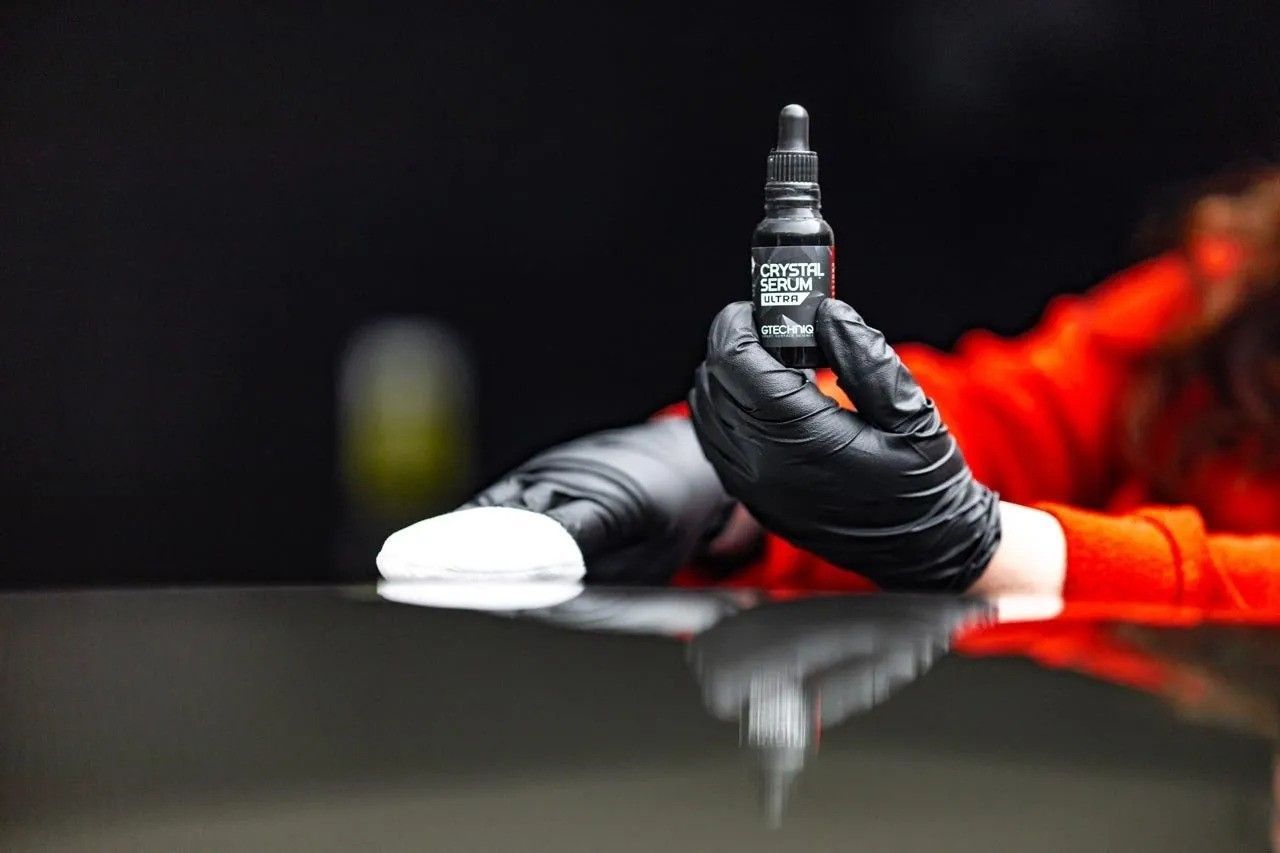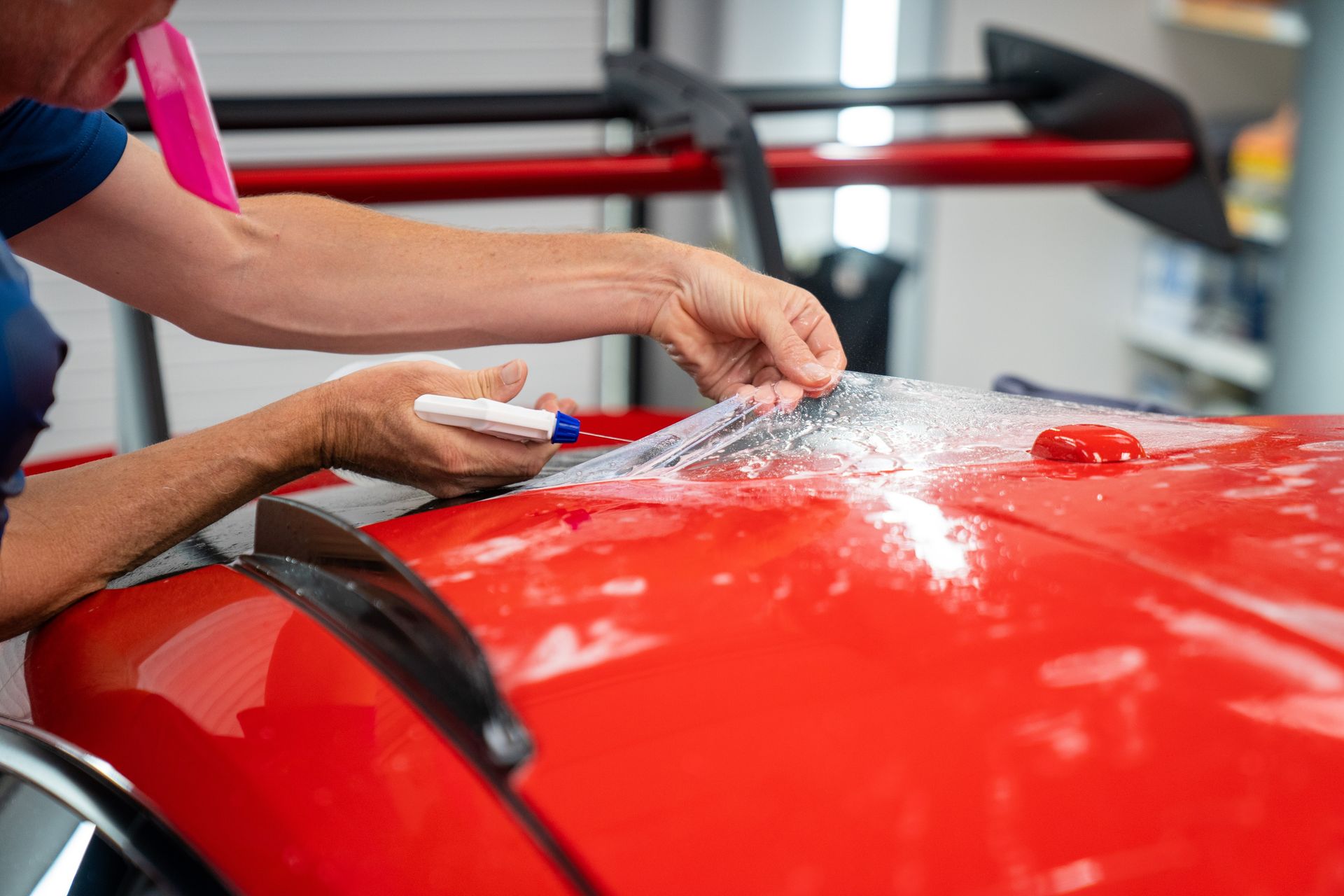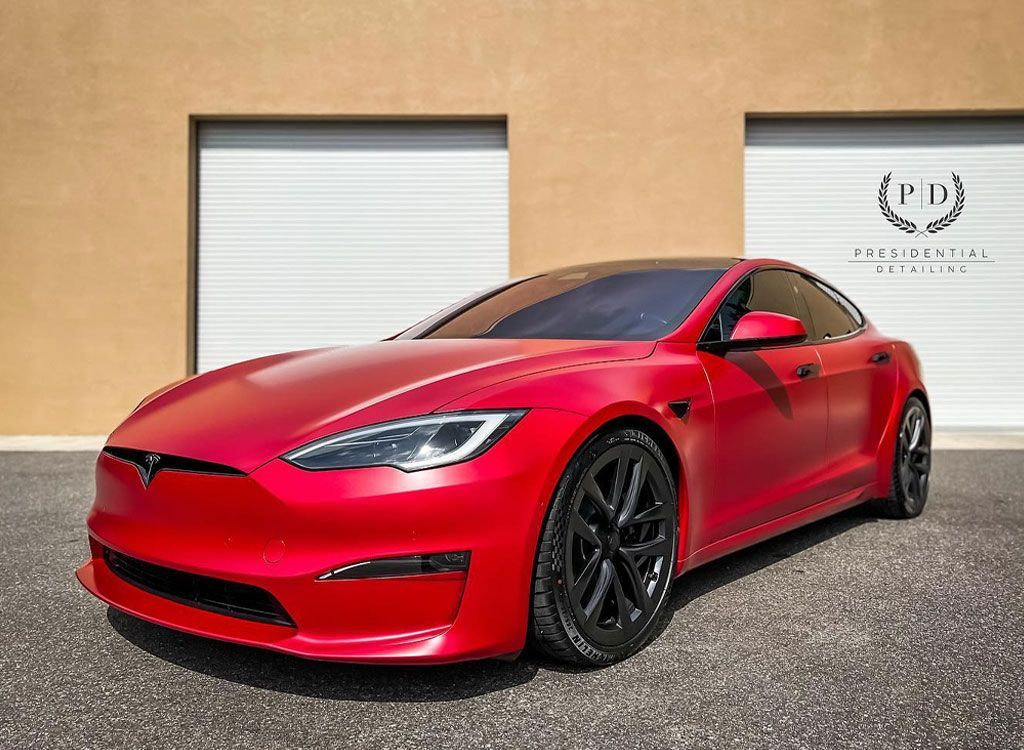Ceramic Coating for Cars: Ultimate Protection Against Degradation
CALL (813) 723-9679
GET A FREE ESTIMATEWhen it comes to keeping your car looking sharp and shiny for years, many drivers are left pondering their best options. You might find yourself asking, "Is there a way to protect my paint better than just a regular wax job?" The answer lies in ceramic coatings—an innovative solution that can offer much more than traditional methods. These coatings act like an invisible shield, protecting your investment from sun damage and daily grime. In this article, we'll explore how ceramic coatings work, their unique benefits, and why they might just be the best choice for those who truly care about their ride's appearance and longevity.
Ceramic coating provides a durable protective layer that shields your car's paint from environmental contaminants, UV rays, and chemical spills, significantly reducing the risk of degradation. Its hydrophobic properties also help repel water and dirt, making cleaning easier and preserving the vehicle's aesthetic appeal over time.
The Benefits of Ceramic Coating
- Unmatched Protection: One of the standout features of ceramic coatings is their exceptional protective capabilities. When a ceramic coating is applied to your vehicle, it forms a robust barrier that defends against numerous environmental threats. Think about it: whether it’s unsightly bird droppings, sticky tree sap, or corrosive road salts, each of these can wreak havoc on unprotected paintwork. Studies highlight the effectiveness of ceramic coatings; for instance, recent research by the International Automotive Science Review reported that vehicles treated with such coatings experienced 70% less surface damage compared to their uncoated peers. This fact underscores the importance of investing in ceramic coatings, not just for aesthetics but also for long-term durability.
- Long-Lasting Wear: Alongside their protective properties, ceramic coatings come with impressive longevity. Unlike traditional waxes that require frequent reapplication—often every couple of months—ceramic coatings have an estimated lifespan extending between two to five years, depending on product quality and care taken during maintenance. Imagine doing a single application and not needing to worry about repeated touch-ups for years at a time! This means less hassle and more time enjoying your car's immaculate finish while saving your wallet from ongoing expenditures on wax and sealants.
- Hydrophobic Properties: Here's where things get even more interesting: the hydrophobic properties inherent in ceramic coatings. This term refers to the water-repelling capabilities that cause water to bead up on surfaces and roll right off. This phenomenon not only enhances aesthetic appeal but significantly diminishes how often you need to wash your vehicle. Picture this: after a light rain or even a thorough wash, you'll notice how dirt and debris merely slide off your car without leaving behind streaks or marks. In practical terms, it cuts down your cleaning time by as much as 50%, allowing you to maintain that showroom shine with minimal effort. Additionally, these self-cleaning properties help prevent dirt from settling into the paint finish, contributing to overall cleanliness and hygiene. With a ceramic-coated vehicle, you'll spend less time scrubbing surfaces and more time enjoying rides down scenic routes or showing off your car at a local car meet.
Understanding these remarkable benefits naturally leads us to explore the intricate methods behind achieving such enduring protection and shine.
Ceramic Coating Process and Techniques
Applying a ceramic coating to your vehicle is more than just a hobby; it's an art that requires patience and attention to detail. The first crucial step in this endeavor is thorough cleaning. As you begin, wash the car meticulously using a pH-neutral car shampoo. This choice is key because harsh detergents can strip away existing protective layers and harm your paint. Make sure to focus on areas where dirt tends to accumulate, such as wheel wells and undercarriages, ensuring a clean slate for the next steps.
Once the car is spotless, it’s time to decontaminate the paint. This stage utilizes a clay bar that effectively removes embedded contaminants like tree sap or industrial fallout that might not be visible to the naked eye. Using a quality clay bar kit can make this step seamless. Work across the surface of the vehicle methodically, ensuring that you're left with a perfectly smooth base for the ceramic coating to adhere to.
With the surface now clean and decontaminated, you’ll want to focus on polishing. Polishing serves multiple purposes: it eliminates imperfections while enhancing gloss. For this task, using a dual-action polisher combined with a cutting compound can elevate the aesthetics of your vehicle significantly, achieving that coveted mirror-like finish. It's important to realize that any imperfections present at this stage will be locked under the ceramic coating if not addressed, which can diminish its overall effect.
Having accomplished these preparatory tasks, you’re ready to move forward with the application of the coating itself. Following the manufacturer's instructions carefully is essential during this phase. Using an applicator pad specifically provided in your kit allows for precision application. Techniques often recommend using a cross-hatch pattern—this method ensures even coverage across all surfaces. Each layer needs careful consideration, so take your time and ensure you've covered every nook and cranny.
Finally, patience truly pays off during the curing phase. Allowing sufficient curing time—typically between 12 to 48 hours—is crucial for optimal performance of your ceramic coating. During this window, make sure to keep your car away from water and dirt; this protective measure helps avoid impairments that could affect adhesion or shine. It’s worth remembering; good things come to those who wait, and investing time here will reap benefits long into the future.
By following these steps diligently, you will equip your vehicle with unmatched protection and aesthetic enhancement that only quality ceramic coatings can provide. As we explore further, understanding the financial implications and durability of these coatings will provide valuable insights into making an informed decision for your investment.
Cost and Longevity Analysis
The costs involved in applying a ceramic coating can vary significantly, so it’s essential to weigh these options carefully as you consider investing in this protective solution. The initial investment is a crucial factor to ponder, as it can range from $500 to $2,000 based on several elements such as the brand of the coating, the type, and whether you choose to have a professional apply it or take the DIY route.
Professional applications may cost more initially, but they often come with not only superior results but also longer warranties that ensure your investment is safeguarded over time. These assurances are worth considering; after all, a high-quality ceramic coating could save you money and heartache down the line.
- Initial Investment: When debating your options, think about what you want from the ceramic coating. If you're looking for exceptional durability and protection, investing in higher-end products may be more beneficial. They often provide better longevity and performance under various driving conditions, especially suitable if you frequently navigate rough terrain or extreme weather with your vehicle. Higher-priced coatings generally contain advanced formulations that enhance their effectiveness against environmental degradation.
- Longevity: Longevity is another vital consideration; a quality ceramic coating can last anywhere from 1 to 5 years, depending largely on factors like your typical driving conditions, local climate, and how meticulously you adhere to maintenance routines. To put this into perspective, a survey conducted by the Car Care Enthusiasts Group revealed that 85% of users felt that their investment was worthwhile, citing both longevity and protective benefits as critical reasons for their satisfaction. This statistic reinforces the idea that while the upfront costs may be daunting, they often pay dividends in resilience against environmental contaminants.
- Cost-Benefit Ratio: While the initial price tag might appear steep at first glance, it's essential to consider the bigger picture regarding savings over time. A well-maintained ceramic coating significantly reduces the frequency of car washes and waxing sessions. It also mitigates potential paint correction treatments that can arise when typical wear causes visible damage. Think about it: A simple coat of protection could save you both money and time spent at detailing shops while keeping your vehicle looking new longer.
With these factors in mind, you'll be better equipped to make informed decisions about protective solutions for your vehicle. Next, we will explore practical ways to apply these coatings effectively and enhance their performance.
Practical Application Tips
While the allure of a shiny new layer of ceramic coating is undeniable, its effectiveness hinges largely on how well you apply it. A critical factor is creating a proper workspace. Working in a well-ventilated and shaded area is essential. When the sun blares down or when the air isn't circulating freely, the coating can evaporate too quickly, leading to an uneven finish. Imagine trying to paint a masterpiece outside on a windy day—it's easy for things to get messy and unpredictable.
Remember to wear nitrile gloves during your application. Not only do these protect your skin from unwanted irritation from chemicals, but they also help prevent oils from your fingers contaminating the surface you're working on. You want every nook and cranny to be pristine before application, so keeping your hands clean is crucial. Now that you've readied your space, let’s dive into some practical field suggestions that will elevate your application technique.
Field Suggestions
Applying ceramic coating in small sections is one of the most impactful tips I can share. Based on customer testimonials we’ve gathered, taking on smaller areas rather than trying to tackle a large section at once leads to a more even application and significantly reduces the chances of revealing high spots—those unsightly raised areas where too much product has been applied. When you focus your efforts, you're better able to work the coating into every crevice and ensure it bonds properly.
Additionally, layering coats after giving each time to cure brings about remarkable depth in gloss and resilience. Many users notice that those extra minutes can save them hours of touch-up work later. Before applying the coating, don’t underestimate the importance of preparation. Each vehicle surface must be meticulously cleaned and free from any contaminants like dust or grease. Think of it as preparing a canvas for painting; without proper preparation, even the finest paints won't adhere correctly. Consider using products specifically designed for prep work which ensures your car is ready for optimal bonding with the coating.
After all these preparations have been completed, managing the drying process can also influence your final result dramatically. Allowing sufficient cure time between coats—typically 48 hours—is a game changer in enhancing durability. Patience truly pays off here; this waiting period helps create a robust bond with the vehicle's surface while ensuring that subsequent layers can contribute their protective properties without interference. Users have remarked on how following this guideline made their applications feel professional—like they had been touched by expert hands.
With practical tips at your fingertips, you're already positioned for success as you embark on maintaining that pristine look for your vehicle's finish. As we transition to another vital aspect of care for coated vehicles, you'll discover effective strategies to keep that protection intact over time.
Maintenance Guide for Coated Cars
Just because your vehicle boasts a fresh ceramic coating doesn’t mean you can forget about it altogether. Regular maintenance is key to preserving that glossy finish and ensuring durability over time. To begin with, establishing a consistent washing routine is crucial. You want to use pH-balanced car shampoos that are free from wax and silicone because these substances can interfere with the ceramic layer, making it less effective. Utilizing a foam cannon not only helps evenly distribute shampoo but also minimizes the chances of scratching as you wash your vehicle.
After you’ve established an effective washing routine, think about supplementing your maintenance with additional protective measures. While some purists may argue against using extra sealants on top of ceramic coatings, consider the benefits they can provide. An annual application of a compatible sealant can serve as an added layer of protection, increasing durability even further. This overlap can shield your car against harsh weather elements like UV rays and acid rain, which is essential since that shiny coat still needs vigilant care to combat these environmental threats.
However, don’t just assume that everything is working perfectly beneath that gleaming surface. Regular inspections are as important as washing routines and sealant applications. After all, even the best coating will eventually show signs of wear. Look closely for what is known as "high spots," areas where the coating may have worn off or become uneven. It’s beneficial to reapply the ceramic coating in those spots whenever necessary to maintain even coverage.
Checking for damage from road debris or other environmental factors will ensure that your car retains its impressive appearance and protective quality over time. Remember, maintaining a ceramic-coated car goes beyond mere aesthetics; it’s about preserving your investment and prolonging its lifespan. With a solid understanding of how to keep your coating flawless, let’s explore who might benefit most from this kind of investment.
Is Ceramic Coating Right for Your Vehicle?
First and foremost, consider the type of vehicle you have. High-end cars, with their luxurious paint jobs, stand to benefit significantly from a ceramic coating. The initial investment in a premium coating can protect that pristine finish from UV damage and environmental contaminants. For instance, if you drive a sports car or a classic model that deserves to be showcased, ceramic coating can add immense value by preserving its aesthetic appeal.
Next, let's explore the environment in which you drive. The driving conditions play a crucial role in determining whether ceramic coating is worth it for you. If you frequently navigate through rough terrains, urban landscapes filled with construction dust, or regions prone to harsh weather—be it excessive rain, snow, or sun—then the protective benefits are even more pronounced. A ceramic coating will provide a formidable barrier against these elements, significantly reducing wear and tear over time.
In addition to vehicle type and driving conditions, we must also consider your financial aspect. Budgeting is essential when contemplating a ceramic coating for your vehicle. While the initial investment—ranging from $500 to $2,500 depending on size and quality—may seem steep, it's important to weigh this cost against the long-term savings it can generate. By minimizing damage caused by environmental factors and cutting down on frequent washing or detailing sessions, you may find that the cost pays for itself within a year or two.
The decision to apply ceramic coating can profoundly impact the longevity and appearance of your vehicle. Think of it as an investment in preservation rather than merely a service expense. If your lifestyle aligns with the aforementioned criteria, then embracing this protective technology could very well be the right choice for you. In summary, carefully evaluate your vehicle type, driving conditions, and budget to determine if ceramic coating is ideal for maintaining your car's aesthetics and durability for years to come.
Premium Ceramic Coating Services in Sarasota, FL
When it comes to preserving your vehicle’s paint and ensuring it remains pristine for years to come, Presidential Automotive Detailing in Sarasota, FL, has you covered with top-tier ceramic coating services. This advanced technology forms a durable, hydrophobic layer that repels water, dirt, and other contaminants, keeping your car looking its best with minimal upkeep. With our expert application, your vehicle will enjoy exceptional protection against the elements and daily wear. Trust Presidential Automotive Detailing for the ultimate ceramic coating solution and experience the difference today!


